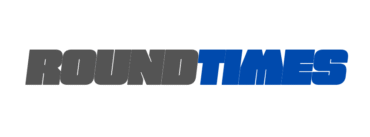Master the art of using LinkedIn to land your next job. This detailed guide walks you through profile optimization, smart networking, content sharing, and job search strategies to help you stand out to recruiters and employers.

In today’s job market, having a well-optimized LinkedIn profile can be just as important as a great resume. With over 1 billion users worldwide, LinkedIn has evolved from being a professional networking platform to a powerful job-hunting tool used by recruiters, employers, and job seekers alike.
Whether you’re a fresh graduate, someone looking to switch careers, or a professional aiming for your next big opportunity, knowing how to use LinkedIn effectively can open doors that traditional job applications cannot. This article breaks down everything you need to know—from profile optimization to building connections—to help you land your next job.
1. Why LinkedIn Matters in Today’s Job Search
Before diving into strategies, it’s important to understand why LinkedIn is so crucial:
- Over 90% of recruiters use LinkedIn to search for candidates.
- Many companies post jobs exclusively on LinkedIn before going public.
- It’s a platform where your network works for you, increasing your visibility.
- LinkedIn profiles often appear in the top Google search results when someone searches your name.
In short, if you’re not using LinkedIn strategically, you’re missing out on valuable job opportunities.
2. Building a Winning LinkedIn Profile
Your profile is your personal brand online. Treat it like a dynamic resume—except it’s visible to the world.
a) Professional Profile Photo
First impressions count. Use a high-quality headshot with good lighting and a clean background. Dress professionally to reflect the industry you’re targeting.
- Tip: Profiles with photos get 21x more profile views and 36x more messages.
b) Compelling Headline
Your headline should be more than just your job title. Use this space to showcase your skills or career goal.
- Instead of: Software Engineer at XYZ
- Try: Software Engineer | AI Enthusiast | Building Scalable Web Apps
c) Customized About Section
The “About” section should summarize who you are, what you do, and what you’re looking for. Write it in the first person and keep it authentic.
“I’m a results-driven marketing professional with 5+ years of experience in brand strategy and digital campaigns. I help companies grow their online presence through data-driven strategies…”
d) Experience That Tells a Story
List your work history with bullet points highlighting key achievements, not just duties. Use action words and quantify your results wherever possible.
- Instead of: Responsible for social media
- Write: Increased LinkedIn followers by 45% and engagement by 60% within 6 months
e) Showcase Skills & Get Endorsements
Add relevant skills—LinkedIn allows up to 50. Request endorsements from former colleagues to boost credibility.
f) Add Projects, Certifications, and Awards
Highlight side projects, courses, or volunteer work that align with your career goals. Use LinkedIn’s “Featured” section for links or media.
g) Customize Your LinkedIn URL
Instead of the generic string, personalize your URL (e.g., linkedin.com/in/janedoe). It looks clean and is easy to share.
3. Networking Smartly: Quality Over Quantity
LinkedIn is a professional networking platform—so use it to build meaningful relationships.
a) Connect Strategically
Don’t just randomly add people. Focus on:
- Industry professionals
- Alumni from your college
- Recruiters and hiring managers
- Colleagues and mentors
Always send a personalized note when connecting:
“Hi [Name], I admire your work in [industry/role] and would love to connect and learn more about your journey.”
b) Engage With Content
Comment on posts, share relevant articles, or write your own. Regular engagement increases visibility and builds your professional reputation.
c) Join Industry Groups
Participate in LinkedIn Groups related to your field. They’re great for networking, learning, and discovering hidden job leads.
d) Follow Companies You Want to Work For
Stay updated on job openings, company news, and employee stories. Engage with their posts to stay on their radar.
4. Using LinkedIn for Job Searching
LinkedIn has powerful built-in tools for active job seekers.
a) Use the “Open to Work” Feature
You can quietly signal to recruiters that you’re open to opportunities without alerting your current employer. Customize it based on your job preferences.
b) Use LinkedIn’s Job Search Filter
Filter jobs by location, company, experience level, and even remote work. Save searches and set alerts to stay ahead.
c) Apply With Your Profile
Many jobs offer “Easy Apply”, which allows you to apply using just your LinkedIn profile. Make sure your profile reflects your resume content accurately.
d) Message Recruiters
Don’t hesitate to reach out to recruiters after applying. A short, polite message can help your application stand out.
“Hi [Name], I came across the [Job Title] opening at [Company] and was excited to apply. I believe my experience in [field] aligns well with the role. I’d be grateful if you could take a look at my application.”
5. Creating and Sharing Your Own Content
Becoming active on LinkedIn boosts your visibility significantly.
a) Share Industry Insights
Write short posts or even articles on what you’re learning, industry trends, or personal career experiences.
b) Celebrate Milestones
Got certified? Completed a course? Started a new role? Share it!
c) Ask Questions
Posts that ask thoughtful questions often spark engagement and showcase curiosity—an attractive trait to employers.
d) Use Relevant Hashtags
Hashtags like #JobSearch, #Hiring, #OpenToWork, #CareerAdvice can extend your content reach.
Also Read: 10 Resume Mistakes That Can Cost You the Job in 2025 (With Examples)
6. Reaching Out Without Being Spammy
a) How to Message a Stranger on LinkedIn
If you’re reaching out for career guidance or job opportunities, be respectful and specific.
“Hi [Name], I’m exploring opportunities in [industry] and noticed your impressive career path. I’d love to ask you a few quick questions if you have 10–15 minutes to chat. Thank you in advance.”
b) Follow Up Gracefully
If someone doesn’t respond immediately, follow up after a week. Keep it polite—persistence matters, but respect does too.
7. Recommendations: The Hidden Power
Ask former colleagues, supervisors, or professors to write you a LinkedIn recommendation. It serves as a public reference and boosts your credibility.
Tip:
Don’t just ask—offer to write one for them first. People are more likely to reciprocate.
8. LinkedIn Premium: Is It Worth It?
LinkedIn Premium offers features like:
- InMail to message people outside your network
- See who viewed your profile
- More job insights
If you’re actively job-hunting, the free trial might be worth trying for a month. Use it to maximize visibility and messaging power.
9. Mistakes to Avoid on LinkedIn
Even the most polished profiles can fall flat due to common mistakes:
- Typos or incomplete information: This affects credibility.
- Overused buzzwords: Words like “hardworking” or “motivated” mean little without proof.
- Being inactive: A profile without activity appears outdated.
- Mass-adding strangers: Focus on building relationships, not numbers.
- Neglecting your headline: It’s one of the most viewed sections of your profile.
10. Real-Life Success Stories
Many job seekers have found success by mastering LinkedIn. Take Ananya Sharma, a marketing graduate who landed her first job by:
- Posting her college project with real campaign results
- Messaging recruiters directly
- Using the “Open to Work” tag smartly
Or consider Rohan Mehta, who shifted careers from finance to data science. He used LinkedIn to:
- Share his learning journey and projects
- Engage with thought leaders
- Network with bootcamp alumni who referred him internally
Both stories prove that LinkedIn isn’t just a resume—it’s your career amplifier.
Conclusion: LinkedIn is Your Digital Career Passport
In a competitive job market, having a strong LinkedIn presence can set you apart. It’s not just about listing your experience but showing the value you bring, engaging with the right people, and positioning yourself for opportunity.
With consistent effort and the right strategy, LinkedIn can help you do more than just find a job—it can help you build a fulfilling career.
Key Takeaways
✅ Optimize your profile like a resume
✅ Network smartly with personalized messages
✅ Engage with content to boost visibility
✅ Use LinkedIn’s job tools and filters
✅ Post content to attract recruiters
✅ Ask for endorsements and recommendations
✅ Avoid common mistakes like typos and inactivity
Final Word:
Don’t just wait for opportunities to knock—use LinkedIn to build doors.












